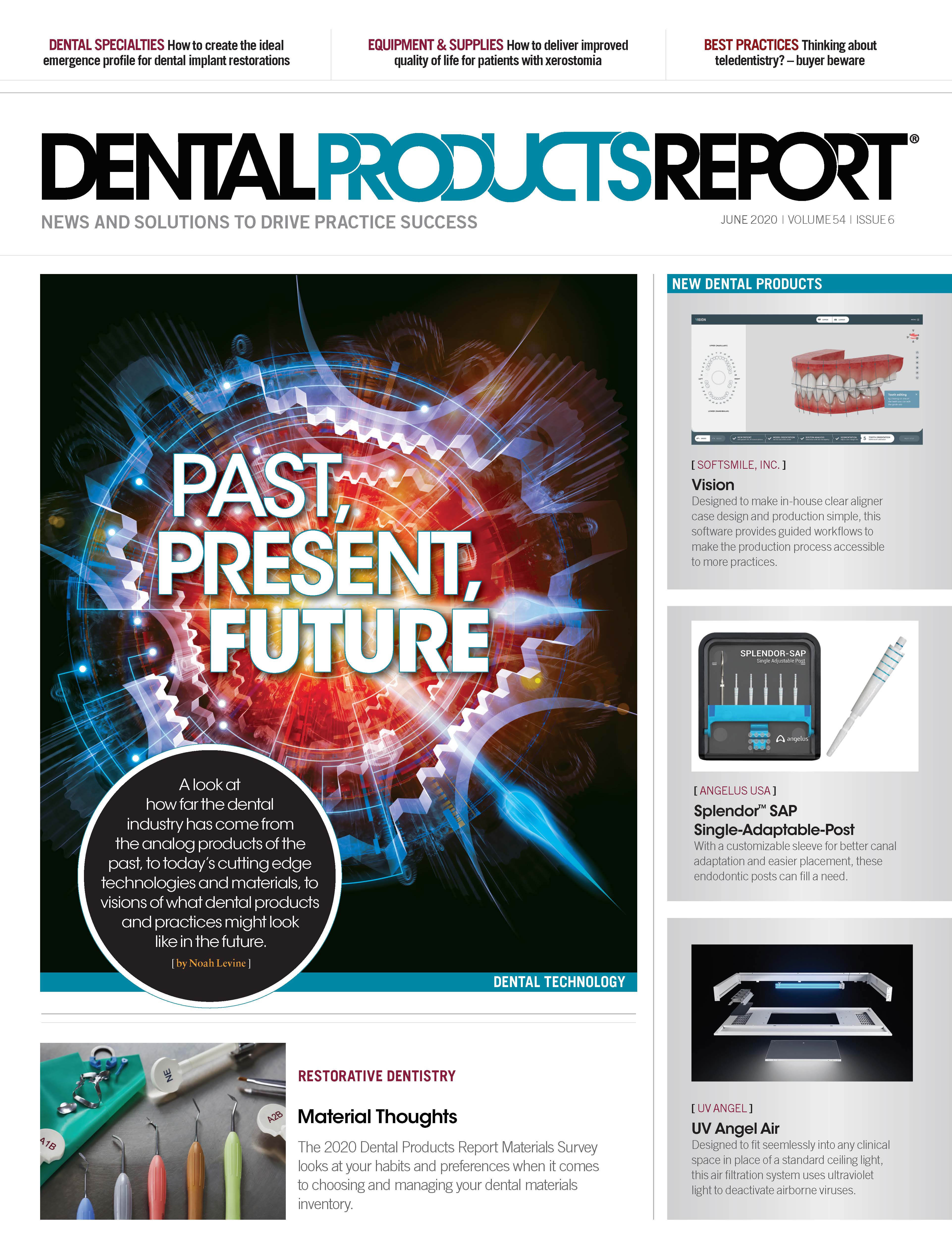Thinking about teledentistry? – buyer beware
Thinking about teledentistry? – buyer beware. With a little homework, you can evaluate some of the many teledentistry solutions and come away with what’s best for your group or practice.

Teledentistry is finally getting the recognition it deserves, not just as a short-term solution for COVID-19, but as a long-term play for innovative groups, DSOs, and practices as we accelerate toward an online world in healthcare. However, as a dental software consultant, educator, and writer over these past years, as well as having been involved with telehealth from its early days, I am alarmed by the number of vendors that have cropped up over these past few months offering “Teledentistry” solutions.
That’s to be expected as the COVID-19 crisis has presented business opportunities to software vendors. But it is also important to recognize that in a post COVID-19 world, teledentistry will prove to be a long-term game changer for many dental organizations and practices as we move into an increasingly online world. What is most alarming though is that in seeing the business opportunity presented by the present pandemic, a number of companies have quickly thrown together basic teleconferencing capabilities marketed as “Teledentistry” solutions.
This reminds me of the early days of electronic health records (EHR) when, because of the quickly growing demand for this new technology, it became a competitive advantage for a software vendor to say they had EHR, whether they did or not. As groups, DSOs, and practices look to incorporate teledentistry into their workflows, it is getting more and more confusing just navigating the landscape with the sheer number of vendors offering solutions. Adding to the confusion are homegrown options being talked about, which are based on culling together disparate third party apps (video conferencing, scheduling, payment apps, etc.) So, what’s a group or practice to do if they want to embrace teledentistry as an offering for their patients-both during COVID-19 and beyond-but don’t know where to start or how to effectively navigate through the maze of vendors and solutions offered?
Some teledentistry platforms offer either synchronous or asynchronous visits, while others offer both components. Shane/ stock.adobe.com

As I have told my group, DSO, and practice clients, the first step is defining how you will use teledentistry both now and in the future, and understanding the features and functionality that will support those objectives and goals. Let’s be clear, true teledentistry is not just about doing teleconferencing with patients (that’s the easy part). But it’s all the additional functionality within the virtual visit workflow including asynchronous communications, collaboration, etc., which make it a solution that a dental organization can truly embrace.
Continue reading on next page
To that end, I’m going to put on my dental software consulting cap here and offer up a few features that you should be thinking about as you evaluate teledentistry vendors and their technical platforms. These have come from distilling interviews and demos with teledentistry vendors. There are numerous features to look for when evaluating the teledentistry platform that’s right for your group, DSO, or practice. In this article we can only cover so much and will focus on just a few of them.
Customized Consent
and History Forms
Make sure the system you purchase gives you the ability to send and receive consent forms for your virtual visit just as you would do in during an onsite visit. It’s also critical that you add COVID-19-specific consent forms to the packet your patient fills out online. Remember, the virtual visit holds as much liability as an in-person visit. In addition, the teledentistry solution you use should have online clinical history, problem, and medication forms similar to what you would gather during an onsite visit.
EHR and Patient Documentation
A virtual visit wouldn’t be very helpful without the ability to document all aspects of the visit, just as you would do during an onsite visit. Teledentistry platforms I have reviewed run the gamut on this. Some offer no ability to document within the teledentistry software.
When I ask how a provider can document the virtual visit, their answer is that they are either working on interfaces to the group or practice’s present practice management software, or the providers need to keep two windows open-one for the teledentistry virtual visit and the other for the practice management system. Be skeptical, however, of teledentistry vendors that claim they are working on interfaces to send a clinical visit data to another system as most practice management vendors do not allow that.
Other vendors offer a rudimentary documentation system similar to a notepad or electronic health records Word document. What most impressed me, though, as a proponent of dental EHR, is the actual incorporation of a true EHR-based clinical documentation system within the telehealth software itself. To understand what I mean by a “true EHR” please refer to some of my past articles published by Dental Products Report.
Asynchronous vs Synchronous Patient Communication
There is much confusion surrounding these teledentistry buzzwords. For the most part think of synchronous communication as a real time patientfacing component of a visit using secure HIPAA compliant teleconferencing. Asynchronous communication in teledentistry is more commonly referred to as store and forward capability. So, for example, a patient takes a picture of their mouth and sends it with the message to their provider. The provider in turn messages back to the patient. And on and on-all in a secure portal.
What I have found is some teledentistry platforms offer real time synchronous visits, and some support asynchronous text or chat-type visits. But not all support both types of visits, which when you think about it, is really needed to meet the needs of a true teledentistry workflow. Also, if you are evaluating platforms that have both types of visits, make sure that it is easy enough to switch back and forth and there are alerts which help both provider and patient know what’s going on at any one point.
Collaboration
Another important feature I feel is essential in a teledentistry system-collaboration-can actually give you functionality that typically would not be available in an onsite visit. Both the synchronous and asynchronous functionality should allow for collaboration between the patient, yourself, and other providers that are involved in the case. From a patient care standpoint, it is very helpful to bring in a care team during the video portion of the virtual visit, as well as supporting capability to share records, images, comments, etc., with other specialists using asynchronous store and forward functionality-both before and after the patient visit.
Getting a Fair Contract
Over the years I have written articles, produced podcasts, conducted webinars, and presented tips at conferences on negotiating contracts that level the playing field with dental software vendors. One of my passions has been to help clients obtain winning contracts and agreements. Teledentistry contracts should incorporate many of the same ideas and structure as cloud-based dental software contracts. So, after having properly evaluated and chosen your teledentistry software, do yourself a favor and don’t just sign on the dotted line without first understanding and negotiating your contract to your benefit.
Where Do You Go From Here?
Hopefully this article has given you the inspiration to evaluate teledentistry vendors by drilling down on their features and functionality. Your goal as you determine the vendor who best fits your strategy is to separate the true full featured teledentistry vendors in it for the long haul from the vendors that are not as committed and in it for the short-term buck. Consider this article just the tip of the iceberg. There are many more innovative features to consider such as HIPAA and security, real time patient education and image presentation, cell phone based intraoral image capture, and artificial intelligence, among others. And in fact, with the explosive growth of this technology, there are new features and functionality being created by innovative companies all the time.
To keep up with this explosion of information including tips for negotiating your software deal, you can download your free copy of The Teledentistry Survival Guide for a limited time at teledentistrysurvivalguide.com.

How Dentists Can Help Patients Navigate Unforeseen Dental Care
December 12th 2024Practices must equip patients with treatment information and discuss potential financing options before unexpected dental treatments become too big of an obstacle and to help them avoid the risk of more costly and invasive procedures in the future.